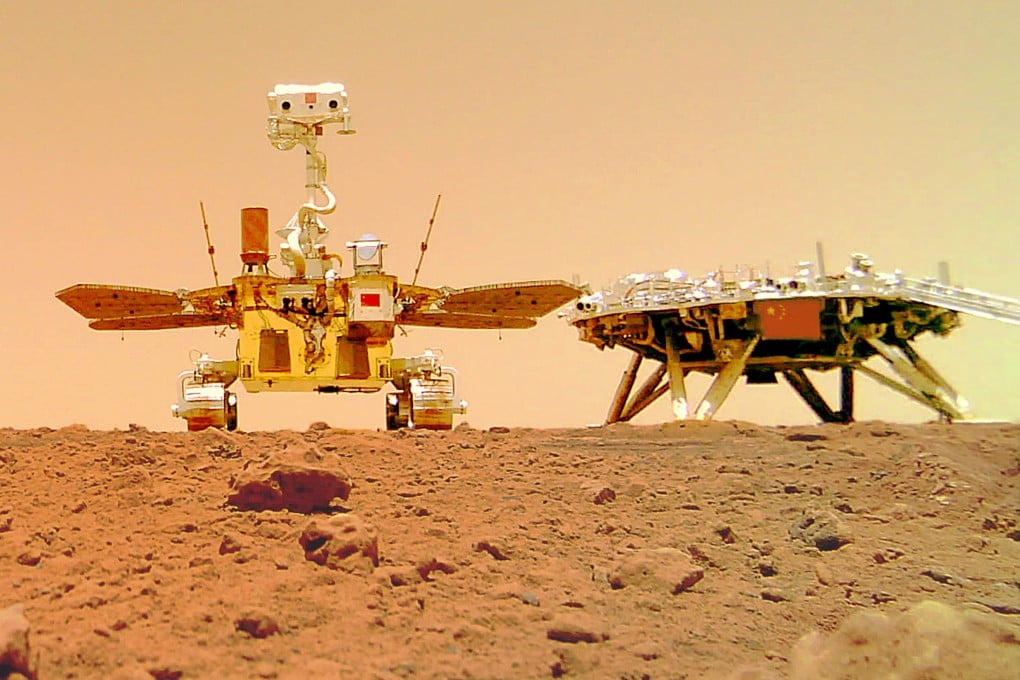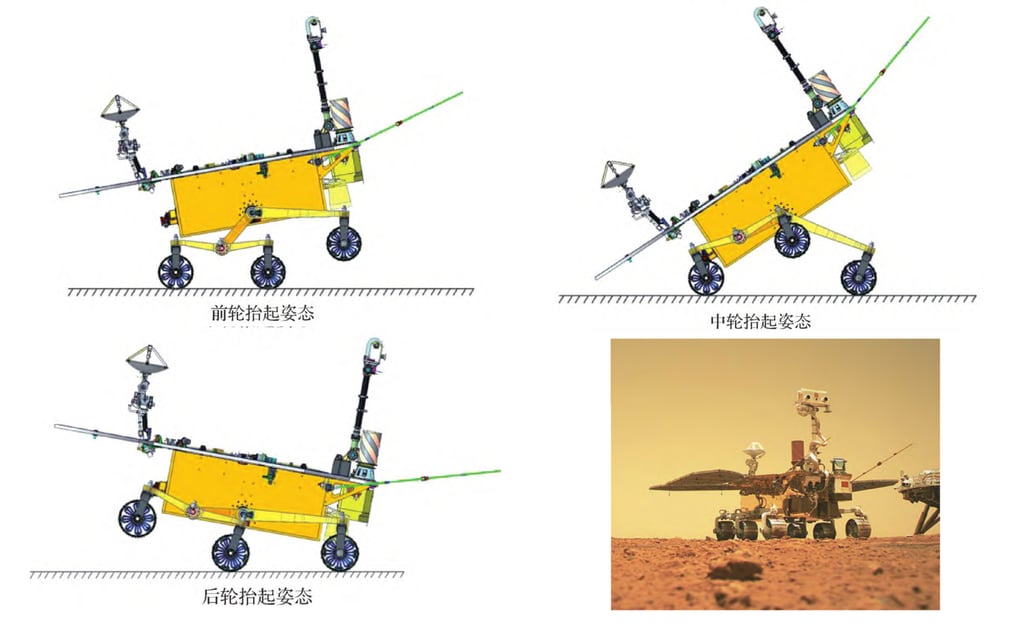Advertisement
Did Nasa imitate China’s Mars robot? Scientists say rovers share ‘inchworm’ design
- Artemis programme’s VIPER appears to borrow from award-winning rover Zhu Rong
- The Chinese device draws inspiration from the movement of a common moth caterpillar
Reading Time:4 minutes
Why you can trust SCMP
17

Stephen Chenin Beijing
Nasa’s latest moon rover appears to borrow from the design of a Chinese robot on Mars, according to scientists familiar with the projects – a twist in a space rivalry in which China has long been accused of being the copycat.
Zhu Rong, a robotic rover named after the Chinese god of fire, has been roaming the red planet for more than a year. It features an active suspension system that simulates the movement of an inchworm, allowing it to pull its wheels free when they become stuck in rocks or sand. The unprecedented design significantly increases the rover’s mobility and chance of survival in rough terrain.
But Zhu Rong may soon have an imitator “inching” its way over extraterrestrial surfaces. The Volatiles Investigating Polar Exploration Rover (VIPER), under development at Nasa’s Ames Research Centre in California, will also “inchworm – or move its wheels in a special, caterpillar-like coordinated way that helps the rover get itself unstuck”, according to Nasa’s website.

In July, a VIPER prototype with this feature completed a ground test at Nasa’s Glenn Research Centre in Cleveland. The rover is expected to be deployed during a 2024 mission to find water at the moon’s south pole as part of the Nasa-led Artemis programme.
“This is a copy of the Chinese design,” said a Beijing-based space scientist who has been closely monitoring the projects.
Though the VIPER uses four wheels, the working principle of its suspension system is the same as that of the six-wheeled Zhu Rong’s “brave design [that] has not appeared in any previous space missions”, said the researcher, who requested anonymity because of the sensitivity of the issue.
The US has long accused China of stealing space technology. The White House and Congress forbid Nasa from collaborating with Chinese organisations or individuals because of concerns over intellectual property theft.
Advertisement